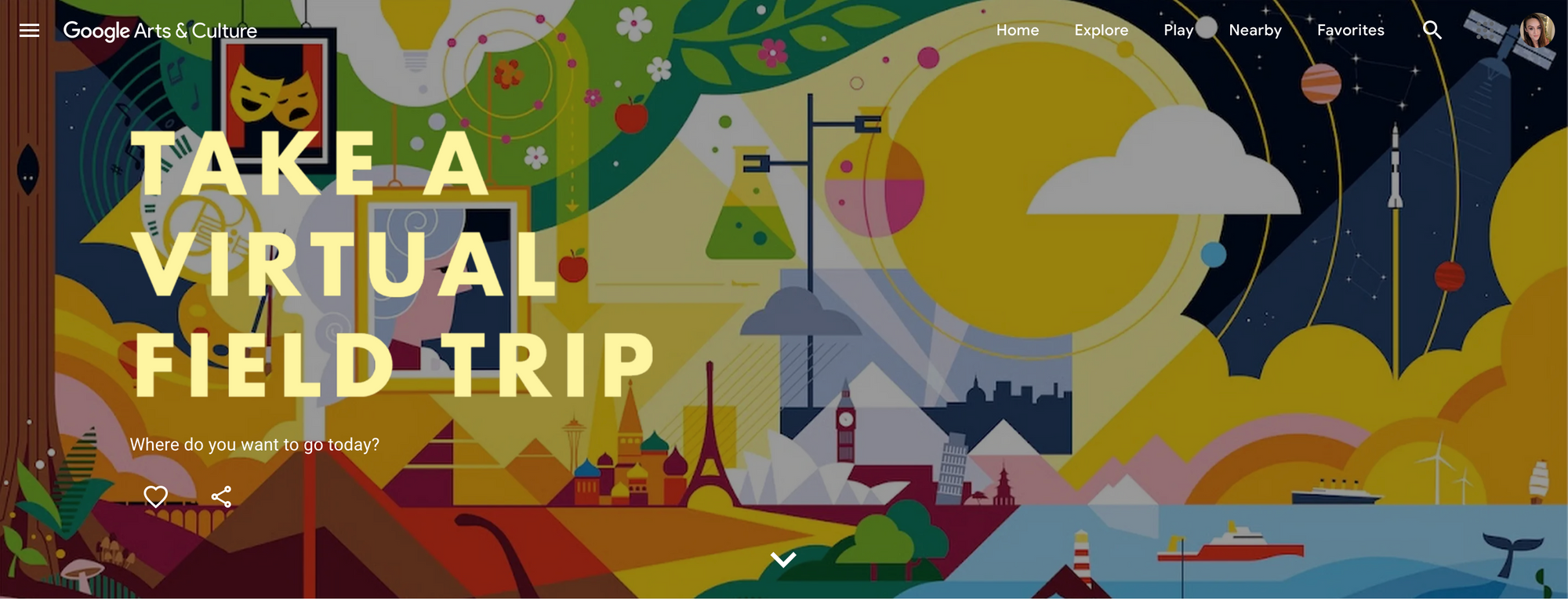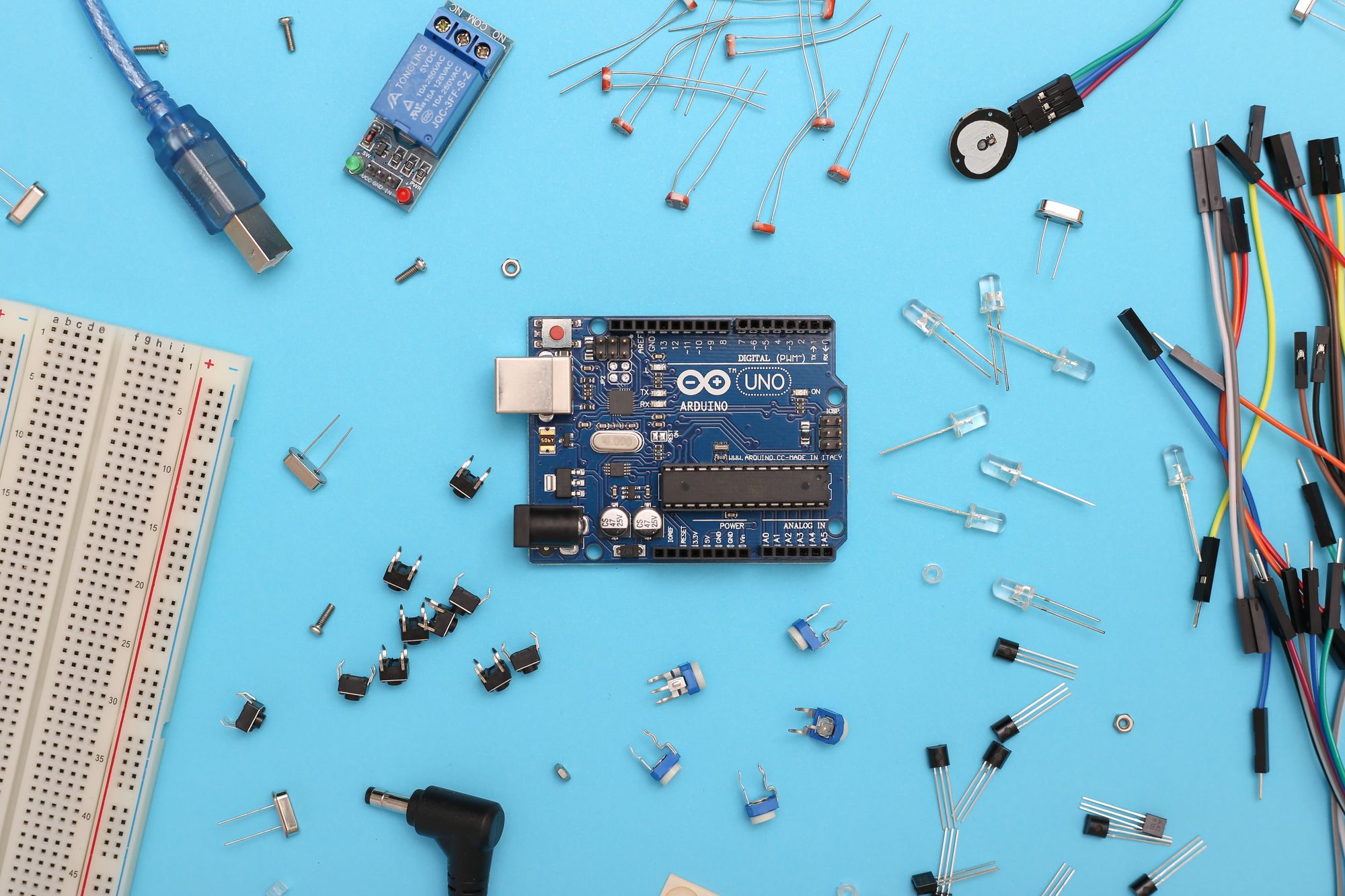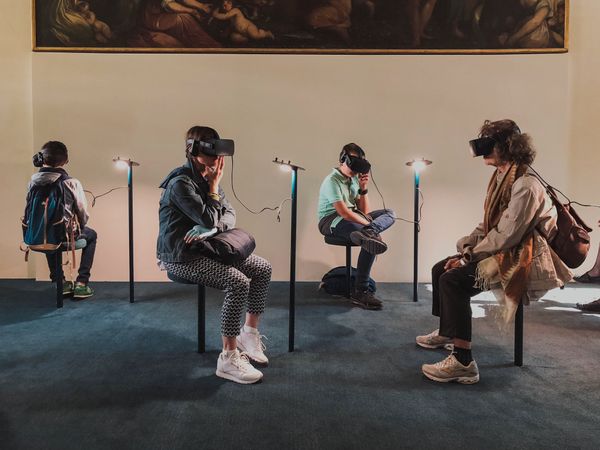There’s no denying that technology has developed rapidly over the past few decades and that this has had a colossal impact on the events industry. Organisers have had to continuously upskill, take on new responsibilities and face new technological challenges, and it's clear that the technological revolution is showing no signs of slowing down.
With the development of the Metaverse and other evolving technologies such as AI, machine learning, and 5G slowly but surely making their way into our lives, our society will inevitably continue to be transformed and shaped by the latest developments. This technology will undoubtedly have a profound impact on the way we live our lives: thirty years ago the internet was brand new and it's hard to imagine living without it nowadays!
In this piece, we aim to break down some of the latest emerging technologies we think should be on your radar and predict what the future holds for the events landscape.
Hosting other-worldly events in the Metaverse
The Metaverse has been a hot topic in events over the past few years, particularly since the pandemic. While we haven't seen it take hold in the real world yet, it has the potential to change the events landscape in a BIG way. It essentially allows the creation of a simulated world where users can interact with one another virtually, either through VR, AR, or AI. Early applications of the Metaverse have been rooted in the gaming world, but it has huge potential for truly immersive virtual and hybrid events.
As is always the case with emerging technologies, finding ways to use the technology that engages users' interests is key. One of the most successful examples of the Metaverse is Decentraland, a play-to-earn blockchain game where players can purchase digital land, build their own programs and sceneries, explore their fellow players' land, and trade virtual possessions and land to earn income. They even recently launched their first-ever, live, multi-artist virtual music festival, To The Moon, as part of Decentraland Art Week. With over 700 attendees, To The Moon has certainly shown the potential this emerging technology may have for the events sector.
How we predict the Metaverse will change events
However, there is still a long way to go for the Metaverse to be accessible to the masses. The cost of developing a truly unique, immersive, and customised virtual world in the Metaverse can be excessive, without even taking into account the availability of VR headsets for users. Devices connecting to the Metaverse will often require strong internet speeds and computer processing capabilities, limiting the potential audience for any of its applications. And finally, the Metaverse creates a disconnect between the virtual world and real life and although this evolving technology is fascinating, the pandemic has certainly taught us that people value in-person interactions above virtual experiences.
Despite these drawbacks, the Metaverse can be used to level the playing field for event experiences across all of your audiences, whichever location or background they're coming from. For better or worse, it's inevitable that the Metaverse will become a key player in events within the next 10 years - and we, for one, are incredibly intrigued to see where it'll take the industry.
Find out what Decentraland has in store for the year in the 2022 Manifesto. Tl;dr: desktop client, social and voice chat improvements, linked #NFTs as wearables, tokenized emotes, smart wearables, mobile app prototype and, oh yes, a #VR client! https://t.co/XmcWMKRwJA pic.twitter.com/ZLYR200bq3
— Decentraland (@decentraland) February 1, 2022
Thrilling your attendees with new realities
Augmented Reality (AR) and Virtual Reality (VR) have become increasingly popular technologies in the events world. Just the premise of being able to literally transport your attendees to a different world with one headset is sure to bring a 'wow' factor to any event and draw guests in for an experience they've never had before.
Many applications of VR and AR in events can be quite elementary, with sponsors using VR games and activities to entice delegates to their stands, but this tech can be used to go much deeper. VR and AR are being used more and more in the education sector: for example, you can learn about constellations with SkyView, step inside the human body with Microsoft HoloLens, and even climb Mount Everest with Google Expeditions. Imagine the possibilities of the things we could see, touch, and learn at our events through the power of this technology.
The key thing to remember in our evolving events industry is that it's all about giving attendees a memorable experience. Find creative ways to engage your audience, and align it with your brand and event objectives. Your attendees won't forget your event anytime soon if your keynote is presented to them under the sea!
How we predict AR and VR will change events
With the announcement of Apple's Vision Pro goggles launching in early 2024, VR headsets may be about to make their way to the mass market, but even then, we predict it'll take a long while before we see them commonly used at in-person events. It's virtual and hybrid events where we're really excited to see the applications of this technology, as event organisers find new ways to take attendees on a journey out of their four walls.

Delivering better virtual experiences with 5G
With 5G already being implemented in many locations, a lot of the world will soon experience internet speeds up to 500% faster than current bandwidth. This increased speed will allow for higher-quality sound, images, and videos, which will reduce streaming frustrations and make the experience of using the internet much more seamless - like the difference between dial-up and the internet we have now!
How we predict 5G will change events
5G has the potential to completely transform the live experience and drive forward the more immersive approach which is becoming a requisite for events. For venues, slow Wifi will be a thing of the past, with the more advanced technology allowing for improved security too.
For large-scale events, 5G will transform the attendee experience. Imagine going to a football match and being able to watch instant HD replays from different angles on your phone, or watching a fashion show where superimposed fireworks explode behind the models. 5G will also be incredibly useful for safety and security - mobile networks get majorly congested at large events and put a huge strain on the ability of emergency services to be able to deal with emergencies quickly. With 5G, there will be a fast, reliable communication network enabling them to attend to emergencies much faster.
Ensuring your event is secure with biometric tech
Biometric tech is the use of technology to identify someone based on their biologically unique data, like a fingerprint. Most of us have facial recognition and thumbprint recognition on our phones these days, and while it's a nifty tool to save us a bit of time when we're on the go, it is also an increasingly useful tool in the events industry. The facial recognition industry is set to be worth $19 billion by 2025, and we see it become more and more pertinent in our society and events.
How we predict biometrics will change events
This technology can identify and authenticate people in seconds based on their unique genetics, allowing quick and easy check-in at an event rather than needing to queue at a desk, saving time and resources and improving the attendee experience.
Organisers can also utilise facial recognition to boost security and keep on top of who is at their events. As an example, back in 2018, Taylor Swift used this software to identify if her known stalkers were attempting to access one of her concerts. This (hopefully!) won't be the case for most events, but it offers some peace of mind for organisers to know that there is an identification check going on without them even needing to lift a finger.
Additionally, data analysis tools utilising facial recognition technology have the ability to recognise expressions, and we see event organisers using AI to interpret this to draw insights from their attendees' reactions to areas of an event. By providing data in real time about how your attendees are engaging with the various elements of your event and their emotional responses, organisers can ensure they optimise the attendee and stakeholder experiences.
Finally, attendees will be able to connect and share their information with just the touch of a thumbprint on an electronic card, or phone, making it easier to network and connect with other individuals at events (we can't wait for the end of squinting to read lanyards...).
However, facial recognition, and the storing of biometric data, is a controversial topic for the time being, with regulations being put in place to protect individual privacy rights. It's essential to be aware of GDPR regulations around this and to make sure that attendees consent to having their biometric data used in this way. We expect that this will be ironed out over the coming years, and biometric tech will be as common as lanyards in events of the future.

Streamlining the planning process with digital floor plans
Any event organiser worth their salt knows that floor plans change. A lot. So whilst the digitisation of floor plans may not necessarily be brand-new cutting-edge technology, it has become much more sophisticated and poses new opportunities for organisers to save time and hassle. Relatively new tech like 3D venue scanning is picking up in pace, and we expect to see it making waves in events over the next few years, in tandem with the growth of the Metaverse.
How we predict digital floor plans will change events
With the ability to drag and drop, take a 3D walk-through, easily amend seating plans and layouts etc, organisers will save valuable time during the planning process, especially for large-scale exhibitions and conferences. This tech is also super useful when in conversation with sponsors, to be able to easily show them where they'll be positioned on the exhibition floor and to be able to just as easily move them should you need to. It can also be a great way to show your platinum or gold sponsors that they'll be in prime position on the day.
Some platforms even allow organisers to create bespoke interactive event maps for attendees that can be embedded into an event app, whereby they can click into each room and find out useful information, such as speakers and session timings, again increasing the touchpoints between organiser and attendee and blending the experience into a seamless one.
3D scanning also means that it's becoming easier than ever to catalogue and map an event environment, which has knock-on implications for creating a VR environment for remote attendees at hybrid events. While we don't see it taking over from in-person events, we predict that hybrid events will have a resurgence in the next few years, with the combination of 3D scans and VR tech coming together to create a unique Metaverse for high-profile, high-budget events.
Tracking attendee data with 'wearable' event tech
Essentially, wearable event tech refers to a wristband or badge which is embedded with a radio-frequency identification chip (RFID). These are scannable chips that track a range of metrics linked to the behaviour and movement of attendees, such as check-ins, room traffic, time spent in sessions, and time spent at exhibitor booths. You could even use it to see when your VIP speakers have arrived, or gain biometric data about the attendees’ emotional states!
How we predict wearable tech will change events
This tech can provide organisers with lots of useful insights to not only ensure the day flows better but also for analysing ROI and other success metrics. From tracking the journey of attendees through exhibition stands and content sessions to seeing where bottlenecks arise, or how much time attendees spend interacting with each other and exhibitors, there's a huge amount of data to be gleaned from technology that accompanies an attendee around the event floor.
In addition to gathering data on attendee movements, there are all sorts of wearable technology that you could use to complement your event. Some glasses allow facial recognition, earpieces that provide live translations, and t-shirts that allow you to charge your phone at the event. This technology is constantly evolving and we're excited to see what the future holds for wearable technology.
However, as with biometric tech, attendees need to be aware of and consent to, having their data tracked and monitored. Otherwise, you'll be in breach of GDPR laws, and risk losing the trust of your clients. This is an area we expect to see much more regulation coming into in the future.

Improving accessibility with technology
Accessibility and inclusion in events is an area that can often be overlooked. We have a moral imperative as event organisers to ensure our events are accessible and inclusive of all audiences, and technology can play a huge role in getting us there.
How we predict new tech will improve accessibility in events
The widespread adoption of virtual and hybrid events has allowed us to have attendees from all over the world. Overcoming the language barrier is key for many of these events. Offering live translation allows the inclusion of attendees who might otherwise miss out on the experience, simply for not speaking the speakers' language.
Live translation also offers a new opportunity for organisers to create more culturally-diverse panels and partner with organisers and speakers all over the world. Useful applications for both virtual and in-person events via audio translation live through headphones or virtual platforms. In addition, offering Sign Language Interpreters, Braille, captions and audio descriptions can also help to ensure that as many people as possible can enjoy the experience. New developments like AI-powered translation, transcription, and audio generation are set to revolutionise events very soon.
AI can also be used to calculate the optimum routes through events (which can be provided to attendees on event apps or through audio guides), calculate the right levels of sound, temperature, and light to keep attendees comfortable and provide chatbots to give attendees a safe point of contact at events to answer queries. All of this points towards a more inclusive and accessible event future, which can only be a positive thing!
There are increasingly more and more tools and resources for prioritising inclusion, some of which you can find in this piece on the future of accessibility in events from our session with Isaac Harvey at International Confex 2022.

Creating unique experiences through holograms
Last but not least, another inspiring piece of event tech we think will shape the future of the events industry is the use of holograms. At one time, holograms were simply a figment of our imaginations or technology only to be found in sci-fi films, but
They could be used to emulate celebrities or high-profile speakers to deliver keynotes and speeches, demonstrate new products, add some fun to a drinks reception, as a tool for creative brand activations, even to bring back a figure from the past. ... the only limit is your imagination! Holographic technology was recently adopted during the Coronavirus pandemic by ESPN: through the use of holograms, they were able to interview quarantining sports players in the studio live on-air, creating a much more seamless and polished experience than just hopping on a Zoom call.
There's been a huge buzz around ABBA's show, Voyage, which combines holograms of the band members with a live backing band in a purpose-built state-of-the-art arena.
These futuristic displays have the potential to revolutionise events and experiences, bringing new levels of immersion and interactivity to everything from conferences to award ceremonies, and we're excited to see what the future holds.
The Big Picture
So what does all this inspiring and emerging technology actually mean for the events industry? Well, we think it shows that experiences at events are going to be even more incredible than ever, which will keep events at the forefront of marketing channels!
Saying that, one of the biggest barriers to the rollout of revolutionary technology is its adoption. New technology is all well and good, but if people don't feel comfortable using it (or can't afford to), then it's redundant! We need to focus on creating experiences that people genuinely want to engage with and use tech to facilitate this.
For example, Nike has delivered multiple iconic brand activations throughout the years, using technology to complement its brand messaging and objective. One such activation was a photo booth that allowed visitors to become the face of the Nike Science of Speed campaign. The magic of this activation was that it was so simple, but in those moments truly made the user feel valued, seen, and feel like they were part of their favourite brand. It was of course also shareable on social media, increasing brand reach and continuing to cement them as the iconic global brand they have been for decades.
In a similar vein, we predict that with this tech and the direction it's heading, our industry will indeed focus on being much more experiential and creating out-of-this-world experiences for our attendees. We think there will be a seismic shift away from run-of-the-mill content and instead, we'll enter into a whole new world that challenges our own sense of reality. Who knows, in 5 years, you might be attending an event on a spaceship on its way to Mars - conducted in the Metaverse, of course! Whichever direction it's going, the future of events looks exciting.
What do you think? Do you think these new technologies will drive the industry forward and change its landscape for the better? Or perhaps they’ll make the experience less genuine and human? Are you excited about the future of event tech, or apprehensive about where it's taking the industry? We'd love to hear your views!

We hope this piece has given some food for thought about the future of event technology and what it means for the industry. If you have any thoughts, we’d love to hear from you! Reach out to us on our social channels below to continue the conversation.



